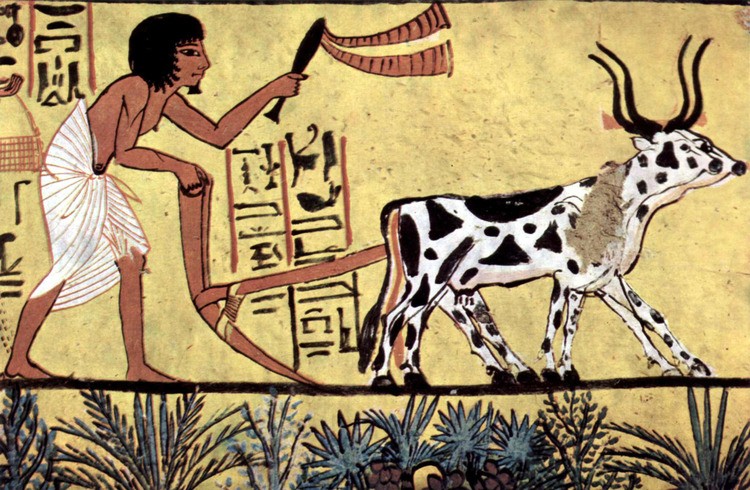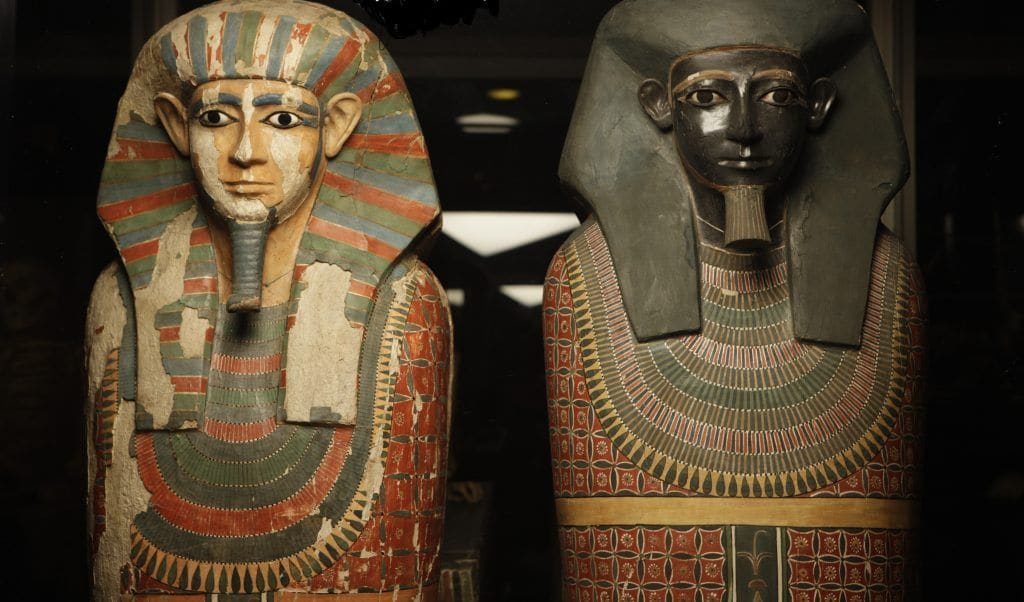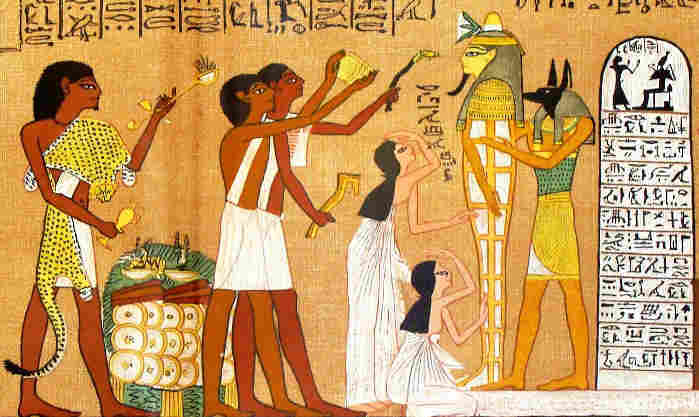How Did the Greek Dispose of Their Dead Ap Art History
In ancient Egypt, a funeral was not simply a funeral.
It was a big performance with many different parts: elaborate rituals, mummification, massive tombstones, and magic spells. The afterlife was a serious matter because everybody wanted to go to the Field of Reeds.
A funeral ceremony was thought of every bit a manner to join the physical world to the eternal globe and the afterlife.
The Field Of Reeds
In the Field of Reeds, sometimes too chosen The Field of Offerings, there's no suffering; only pleasure, infinitely.

Death was not the stop, but the beginning of the journey into afterlife and to enter the Field of Reeds, it'southward essential to discover the proper funeral practices.
Ancient Egyptians believed that the soul was divided into ix parts:
- Khat – The trunk
- Ka – a doppelganger
- Ba – a human-avian conduit between heaven and earth
- Shuyet – a shadow cocky
- Akh – a transformed immortal cocky
- Sahu – office of Akh
- Sechem – part of Akh
- Ab – the source of expert and evil, the heart
- Ren – a hole-and-corner name
After collecting the Akh, the god Anubis would guide the soul to the Hall of Truth where it would exist judged by Osiris, the Gauge of the Dead, and Ruler of the Underworld.
Osiris would weigh the Ab, "the heart" of the soul against the Feather of Ma'at on a grand scale of gold.
If it's heavier, the soul would be punished. If it'south lighter, the soul would exist further investigated by the 42 Judges and the gods. Simply worthy souls would enter the Field of Reeds.
- What Aboriginal Egyptians have to do to Reach the Field of Reeds?
- Egyptian Myth: Osiris, Isis, and Horus
- A Summary on the Legend of Osiris
Mourning And Lamentations
Mourning was a meaning aspect of aboriginal Egyptian funeral practices. The louder, the improve.
In the households of the elites, there would be screaming and wailing as the people mourn the passing of the main or mistress.
In grandiose glasses of grief, women would, after smearing their heads and faces with mud, accept to the streets and round up their relatives and friends. They would beat on their exposed breasts and grieve in public.
Lamentation was essential in a successful funeral. During the ceremony, professional mourners known every bit the "Kites of Nephthys" would be employed to perform "The Lamentations of Isis and Nephthys".
Egyptians believed that these outpourings of grief could reach the Hall of Truth where the soul faced judgment.
- Old Kingdom Burial Customs: Third to 6th Dynasty
- How do Ancient Egyptians Prepare for Expiry?
- Aboriginal Funeral Rites: Arab republic of egypt vs Cathay
- The History and Employ of Death Masks in Ancient Egypt
- A Discussion on the Importance of Religion in Ancient Egypt
- Nephthys: Mistress of the Firm
Mummies And Coffins
The body, the Khat, of the dead was considered a function of the soul; it had to be preserved and cached according to strict religious regulations.
To program for the funeral, the family would transport the corpse to the embalmers. From the embalming procedure to the grade of coffins, in that location would be different grades.

For more wealthy folks, more expensive ingredients, similar palm wine and pure myrrh, were used in the preservation procedure. Removal of the organs was more intricate, involving complex surgery.
Non all aboriginal Egyptians could afford to mummify the dead.
The body would so be covered in natron, the sacred salt. After seventy days, information technology would be wrapped in linen, held together with gum.
For poorer folks, new linens were too costly, so they had to apply their sometime dress for mummification. The wealthy would society a sarcophagus to encase the coffin, but the poor would be buried in the simplest graves.
Information technology's as well a common do for early Egyptians to place their near valuable possessions in the coffin, so they could "savour" these things in the Field of Reeds. Along with other religious objects, "The Book of the Dead", an ancient Egyptian funerary text, would also be placed in the coffin.
- A Expect at the Tombs of Ancient Arab republic of egypt
- An Overview of Egyptian Mummies
- What are the Materials Used in Egyptian Mummification?
- A Brusk Article on Ancient Egyptian Amulets
- What are Shabti Dolls?
- Explore "The Volume of the Expressionless" in 3D!
The Opening Of The Mouth Ceremony
The Opening of the Oral fissure ceremony would exist performed past a priest or the son of the deceased, who would typically be clothed in leopard skin. Selected spells from "The Volume of the Dead" would be recited and a dogie would be sacrificed.

Throughout the ceremony, "The Lamentations of Isis and Nephthys" could be heard. When the body arrived at the entrance of the tomb, the priest would touch the mouth or confront of the dead with his hand.
In an early Egyptian funeral, the Opening of the Oral cavity was significant considering information technology "opened" the senses of the spirit of the expressionless to savor offerings of food and drink. Reincarnated every bit an Akh, the dead could then join the funeral feast with the mourners.
After the meal, the expressionless would journey to the Hall of Truth.
- An Overview of The Opening of the Mouth
- A Brusque Commodity on the Cult of Isis
- Hither'southward More Information on Egyptian Tombs with Diagrams
- A Twenty-four hours in the Life of a Nobleman and a Farmer in Ancient Egypt
- What do Priests do in Aboriginal Egypt?
trenwithtwiletionly.blogspot.com
Source: https://choicemutual.com/ancient-egyptian-burial-practices/